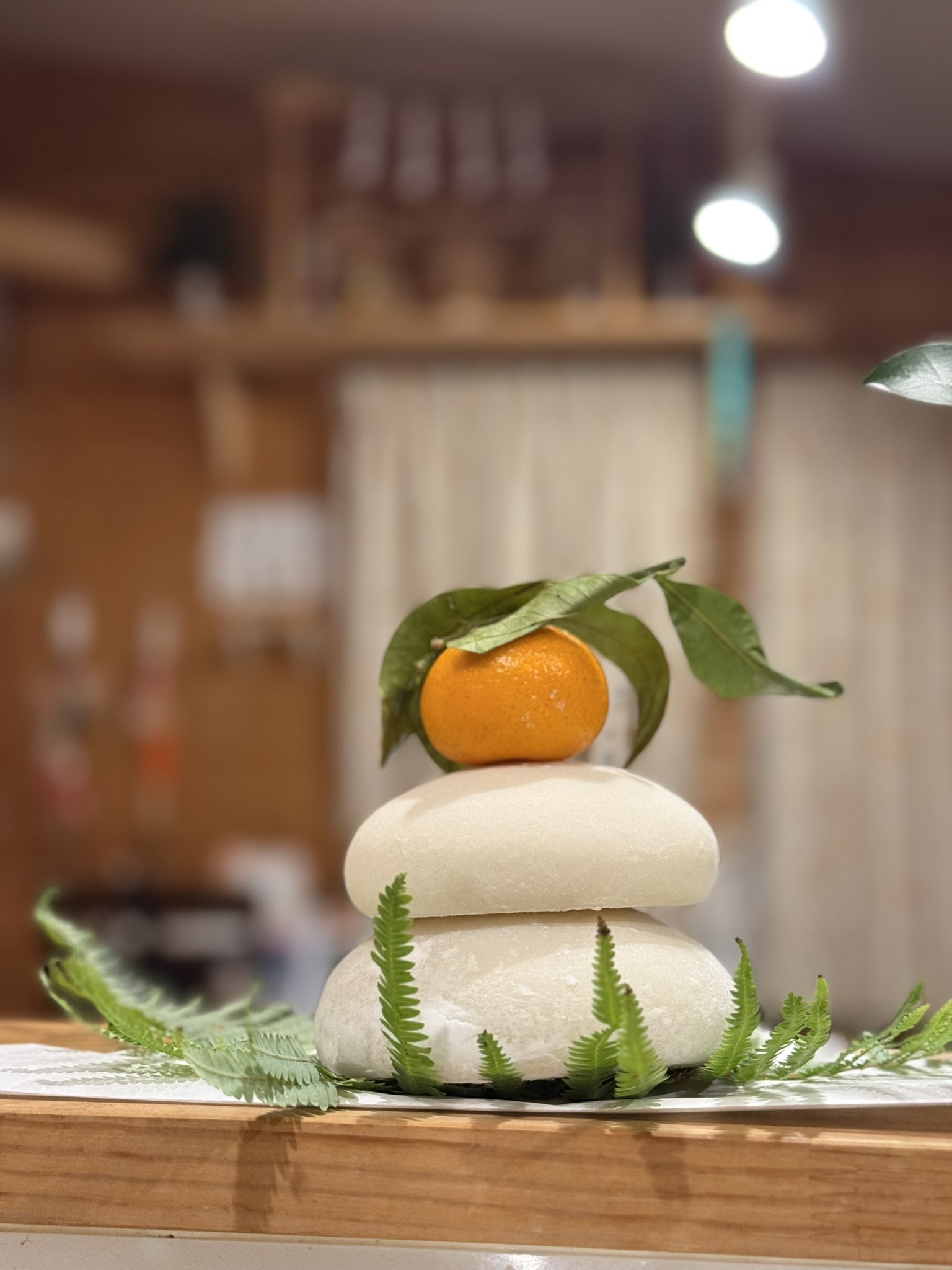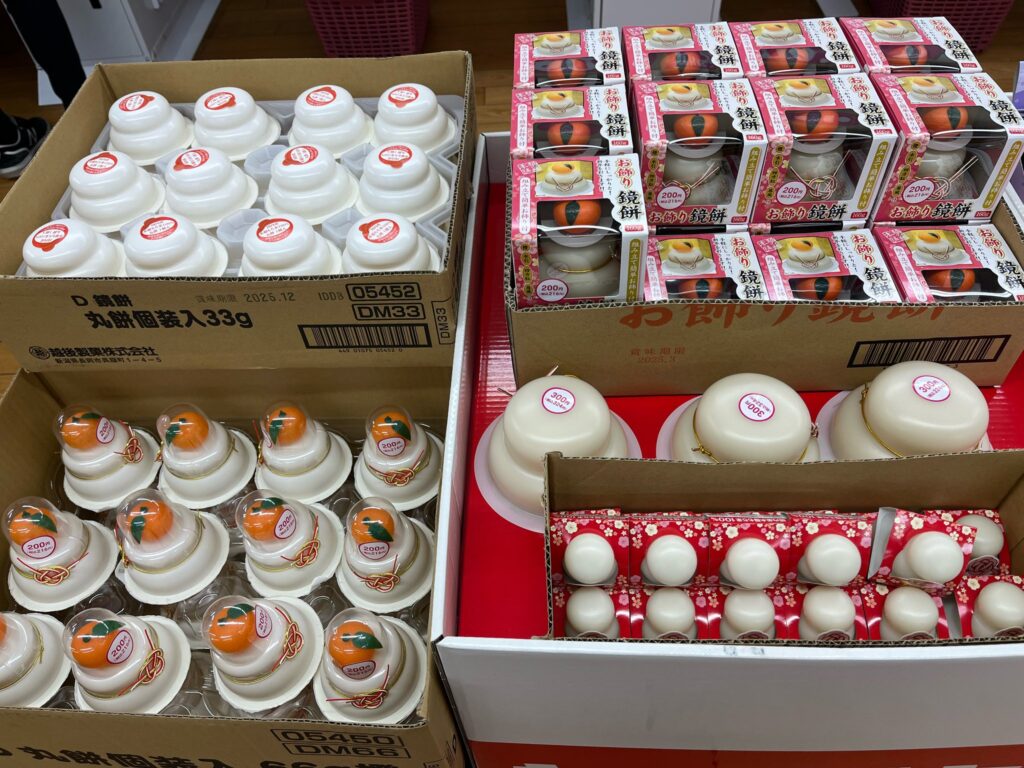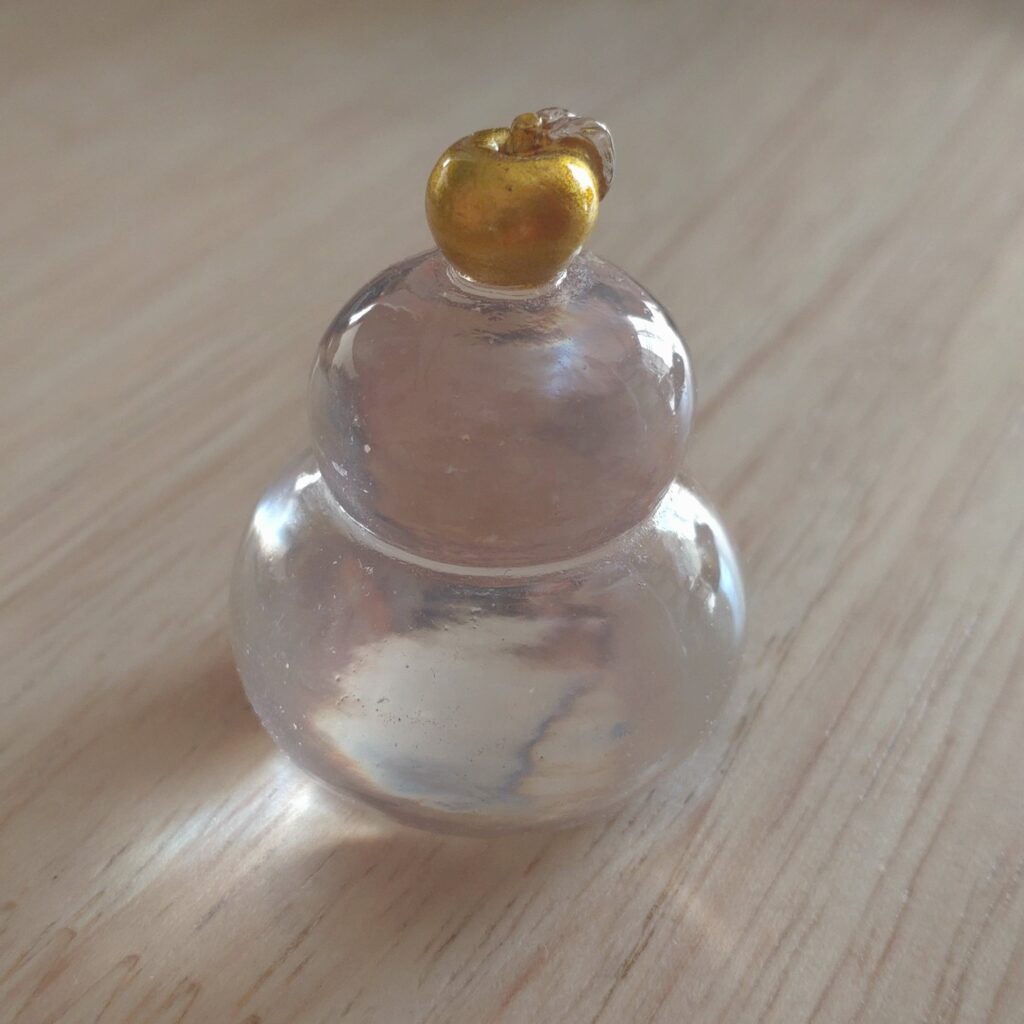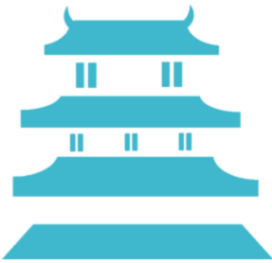
What is Kagami Mochi (鏡餅)?
During the New Year season, you may have seen this unique decoration in Japanese stores and restaurants. Kagami Mochi (literally “mirror rice cake”) is a traditional Japanese New Year decoration deeply rooted in Shinto practices and Japanese culture. Its distinctive shape, made by stacking round rice cakes, symbolizes wishes for the health and prosperity of families.
The Origin of Kagami Mochi
The history of Kagami Mochi dates back to the Heian period (794–1185). At the time, mirrors were considered sacred objects, and the name “Kagami Mochi” originates from this connection. Mirrors symbolized the sun and were seen as tools to invite the gods. The round shape of the rice cakes imitates the sacred mirror.
Furthermore, rice cakes themselves represent Japan’s agricultural culture, symbolizing an abundant harvest and family unity. Offering Kagami Mochi to deities is a way to express gratitude and wish for blessings in the coming year.
The Meaning of Kagami Mochi
Kagami Mochi carries several symbolic meanings:
- Harmony: The round shape signifies harmony in family and human relationships.
- Health and Prosperity: The white color of the rice cake represents purity and cleanliness, symbolizing health and prosperity.
- Sacred Offering: Kagami Mochi serves as an offering to the gods, signifying a sacred presence.
How to Display Kagami Mochi
Here’s how Kagami Mochi is traditionally displayed:
- Prepare the Base: A sanpō (wooden stand) or another type of base is typically used.
- Stack the Rice Cakes: Place a larger rice cake on the bottom and a smaller one on top. This arrangement symbolizes the moon and the sun, representing balance and harmony.
- Add Decorations:
- Daidai (Bitter Orange): Represents prosperity and continuity for future generations.
- Kombu (Seaweed) or Shrimp: Symbolizes longevity and joy.
- Shide (Paper Decorations): Indicates sacredness.
Essentially, as long as you stack two rice cakes and place an orange on top, you’ve got it right🍊

When to Display Kagami Mochi
The ideal time to display Kagami Mochi is between December 28th and 30th. Avoid the following dates:
- December 29th: The pronunciation resembles “double suffering,” making it an inauspicious day.
- December 31st: One-night-only displays are considered disrespectful to the gods.
Customs may vary depending on the region and family traditions.
How to Dispose of Kagami Mochi
Kagami Mochi is typically removed on January 11th during a ceremony called “Kagami Biraki” (Opening the Mirror). This involves breaking the rice cakes into smaller pieces and eating them, symbolizing receiving blessings from the gods and wishing for good health. Use hands or a wooden mallet to break the mochi; avoid cutting with knives as it is considered bad luck.
Kagami Mochi as a Souvenir
Kagami Mochi is not only made from real rice cakes but also comes in miniature or plastic forms. These items are popular as souvenirs, especially among foreign tourists and those interested in Japanese culture.
- Seasonal Exclusivity: Kagami Mochi goods are often available only during the New Year season, making them special and ideal as gifts.
- Variety of Designs: From keychains and ornaments to food sample-style items, there’s a wide range of unique options to choose from.
- Cultural Significance: Explaining the history and meaning of Kagami Mochi when gifting it can be a great way to share Japanese traditions.
Why not look for these seasonal Kagami Mochi goods and enjoy their charm?

Conclusion
Kagami Mochi is more than just a New Year decoration; it reflects ancient traditions and the cultural spirit of Japan. Every aspect of its display and handling carries a deeper meaning, symbolizing prayers for a prosperous and healthy year. This New Year, why not include Kagami Mochi in your celebrations and wish for health, happiness, and success?






